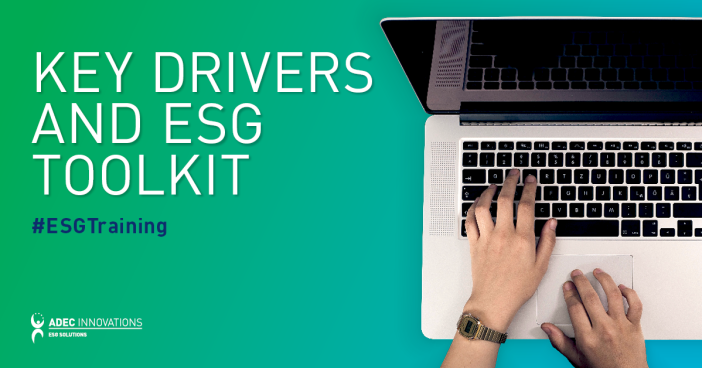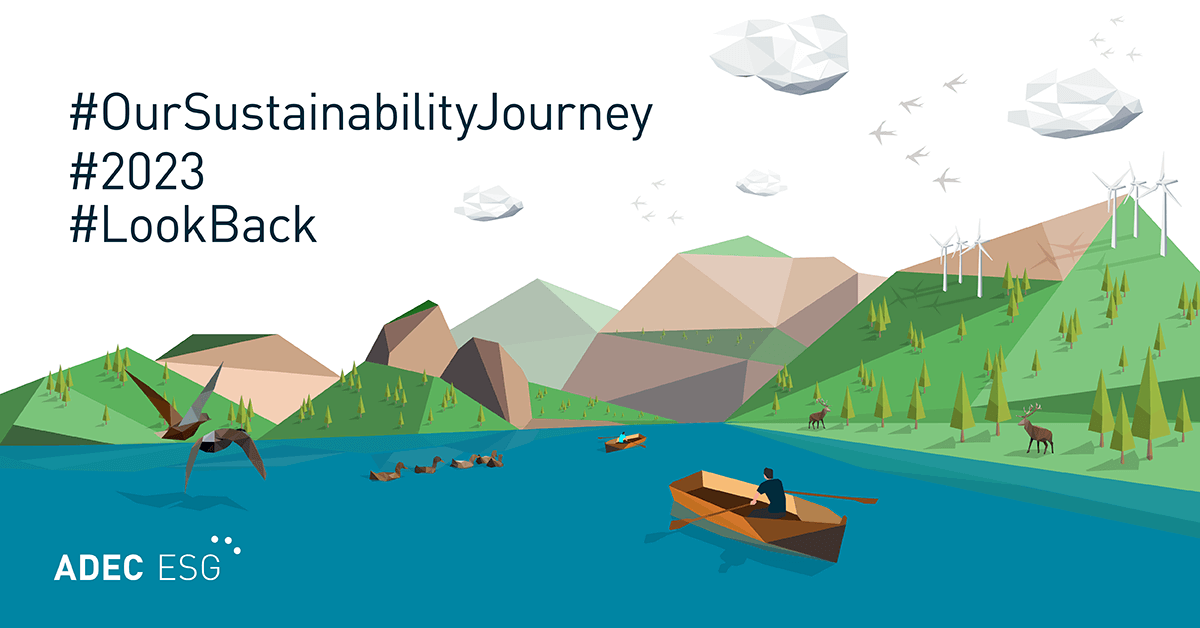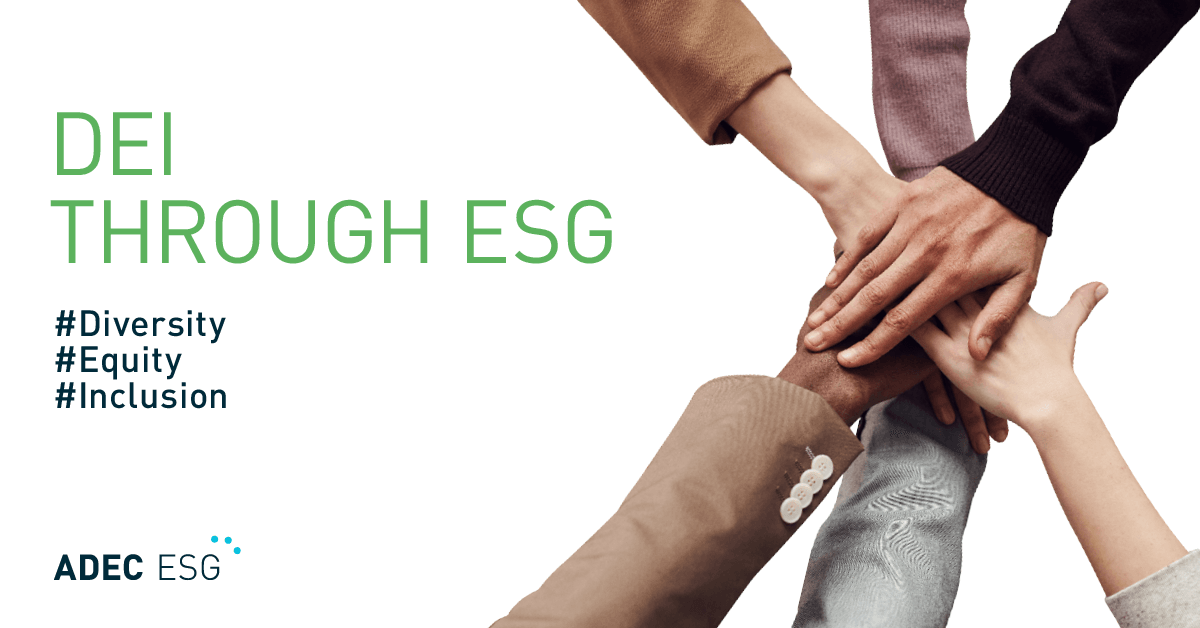We’re teaming up with the U.S. Green Building Council Los Angeles (USGBC-LA) and the Los Angeles Sustainability Executives Roundtable (LASER) for an exciting new training series catered towards ESG professionals.
This six-part workshop series provides the knowledge you need to integrate environmental, social, and governance (ESG) topics into your day-to-day work and throughout your organization. Created to support anyone involved in developing ESG strategies and initiatives, each session arms you with practical knowledge, tools, and strategies for application.
In this blog post series, we’ll recap each session to give you a preview of the content we covered. For the full experience—including detailed discussions from expert speakers, instant feedback through live Q&As, and valuable take-home resources like the ESG Toolkit—sign up for upcoming training sessions on the USGBC-LA website.
Hosted by USGBC-LA and featuring speakers George Lu (Associate Director, ESG Technical Services, ADEC ESG Solutions) and Sara Hickman (ESG Director, Leading Edge), our second session focused on main drivers within the ESG market and introduced attendees to the course’s ESG strategy toolkit.
ESG market drivers and influences
The session began by covering the evolution of ESG, moving from the proliferation of “green” labels in the 1990s and early 2000s to the emphasis on overall business resilience that we see more and more of today. We discussed a similar idea in a previous webinar, Key Trends and Data from CDP 2021, which traced the evolution of ESG from reporting and disclosure in the early 2000s to performance and governance in the early 2020s.
Some of the main market drivers for ESG include:
Financial and institutional forces
Top investors like BlackRock, Vanguard, and State Street have been increasingly more vocal about the importance of ESG and what ESG topics they are prioritizing. We’ve also seen an uptick in ESG-related shareholder proposal submissions, including environmental proposals covering GHG emissions and other climate topics.
Peer action and competitive advantage
Increased interest in ESG on the investor side has also led to increased interest in ESG from the companies in which they invest. ESG disclosures, performance monitoring, data management, and clearer communication and commitment on ESG topics are on the rise among global organizations, who are now motivated to keep up with investor demands, regulatory requirements, and pressure from their peers.
Consumer markets and higher demand
Many consumers are taking a closer look at ESG topics and have communicated that they are willing to pay a premium for goods and services from companies that demonstrate a commitment to sustainability. From carbon emissions and waste management to business ethics and community relations, consumers are more educated on sustainability and set a much higher bar than in previous years. Enthusiasm for sustainability topics comes with a healthy dose of skepticism—from both investors and consumers—so it is vital that companies take a thoughtful and accurate approach to ESG statements and other communications.
Addressing materiality
ESG topics can be incredibly broad, and it can be difficult to decide which topics your organization should be addressing. A materiality assessment is a great way to figure out what topics are a priority for your organization and allow you to direct time and resources accordingly.
In this part of the session, we reviewed SASB’s Materiality Finder as an example of one way to look at materiality. Broken down into industries, SASB’s tool identifies what issues are material to each individual industry, and from there it explores more specific impacts within those issues. The Household and Personal Products industry, for example, breaks down supply chain management further into palm oil supply chain concerns, whereas Apparel’s supply chain management issues focus on environmental impacts and labor conditions.
Many businesses fit into more than one of SASB’s industries, but it remains a great place to get started thinking about materiality before diving into a materiality assessment.
ESG strategy toolkit and best practices
During session three, presenters discussed best practices for broader governance, risk management, social responsibility, decarbonization, water, waste, biodiversity, health and wellness, and other topics. This section on ESG strategy also covered strategy matrices for environmental, social, and governance topics, providing a starting point and path of progression towards improvement across multiple categories.
This session also served as a question-and-answer period, addressing specific questions posed by attendees on topics such as:
- Scope 3 emissions management
- Materiality
- Evolving reporting requirements of frameworks like CDP and the TCFD
- The importance of supply chain management
- The co-benefits of certain strategies, e.g. linking benefits across both environmental and social spheres
- Different ways to engage and communicate with internal stakeholders as well as your community on sustainability
When first thinking about your ESG strategy, you might consider breaking the process down into phases, from initial assessment (e.g. baseline and gap analysis) to implementation and beyond. Every organization’s strategy will be different, and there is no singular approach to forming and implementing a “good” ESG strategy. It’s also important to understand that ESG is a constantly moving target, and as your organization evolves, your strategy should evolve with it.
ADEC ESG Solutions offers tailored, integrated strategies to help you achieve your sustainability goals. We work side-by-side with organizations of every size and in every industry, from ESG beginners to sustainability leaders, supporting programs and plans that enact real-world change. Read more about our clients and their successes to learn how our team might support you on your Sustainability Journey.




